In January 2025, the European Biogas Association (EBA) released the brochure “Decoding biogases”. It provides a short but comprehensive overview of the European biogas and biomethane sector.
The impact of biogases goes far beyond energy production, as they provide solutions to significant societal challenges. They support grid stability, provide affordable and sustainable energy, and offer effective waste management solutions. In addition, the biogas sector creates green jobs and boosts the development of the European Bioeconomy.
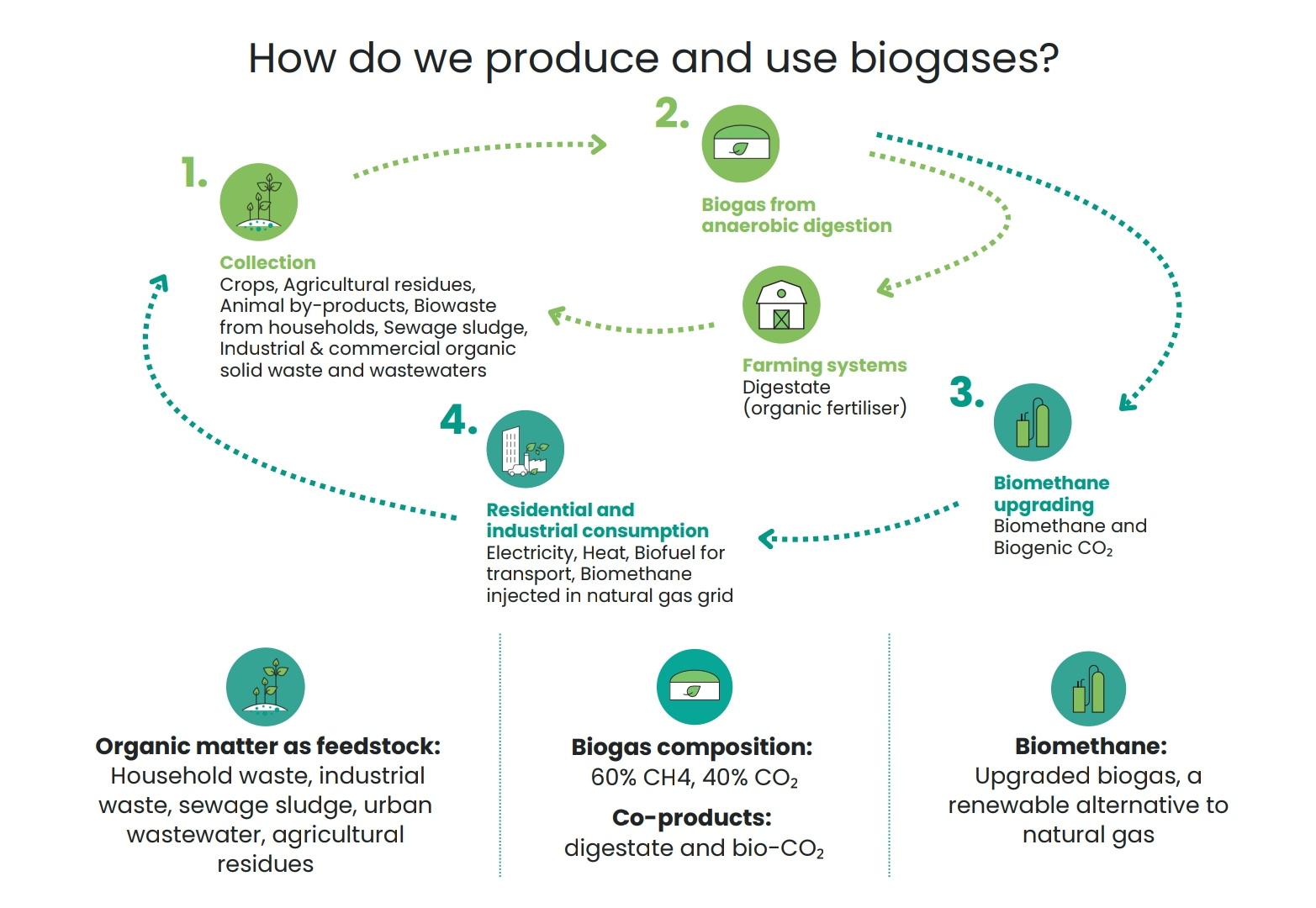
Source: EBA.
Biogas production
22 bcm of biogases were produced in 2023 in Europe. It`s:
- gas consumption of Belgium, Denmark, and Ireland combined;
- 7% of EU natural gas consumption in 2023.
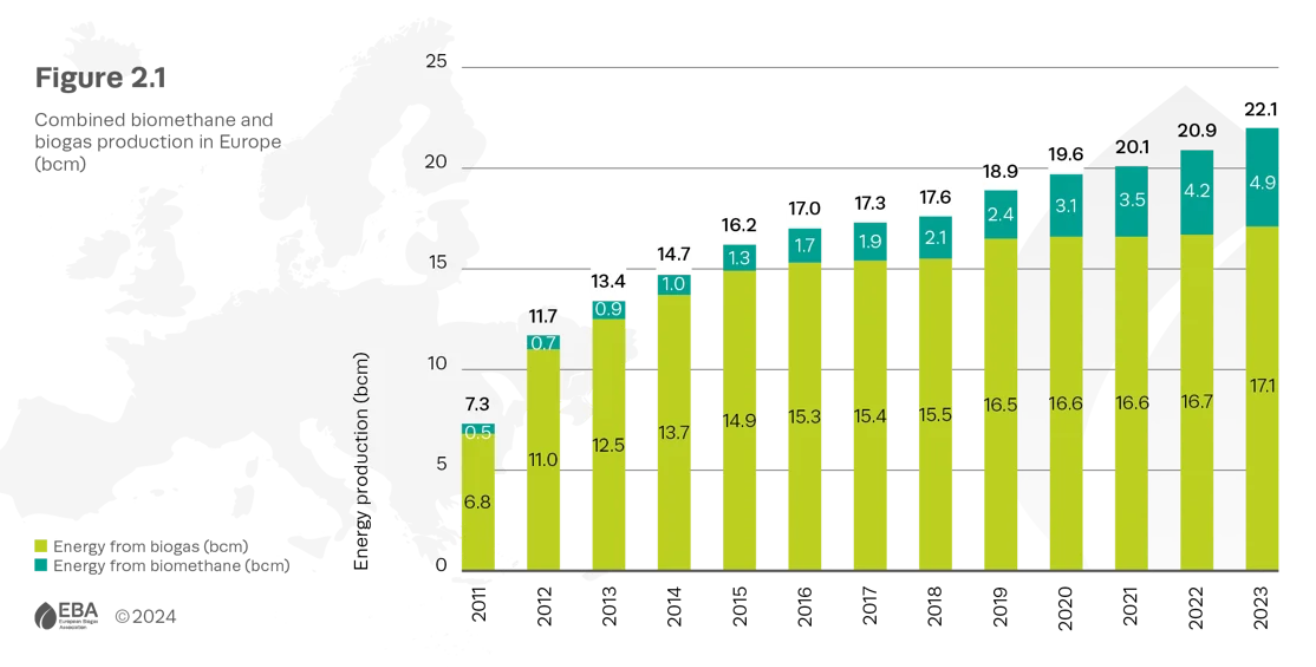
Source: EBA.
25 European countries are active in biomethane production. Currently, there are 1,510 biomethane plants in Europe, of which 1,324 are in the EU-27. More than 85% are connected to the gas grid (mainly distribution grids).
Biomethane production as of the first quarter of 2024 amounted to 6.4 billion cubic meters. Italy, France, Denmark and the UK are the leaders in biomethane production.
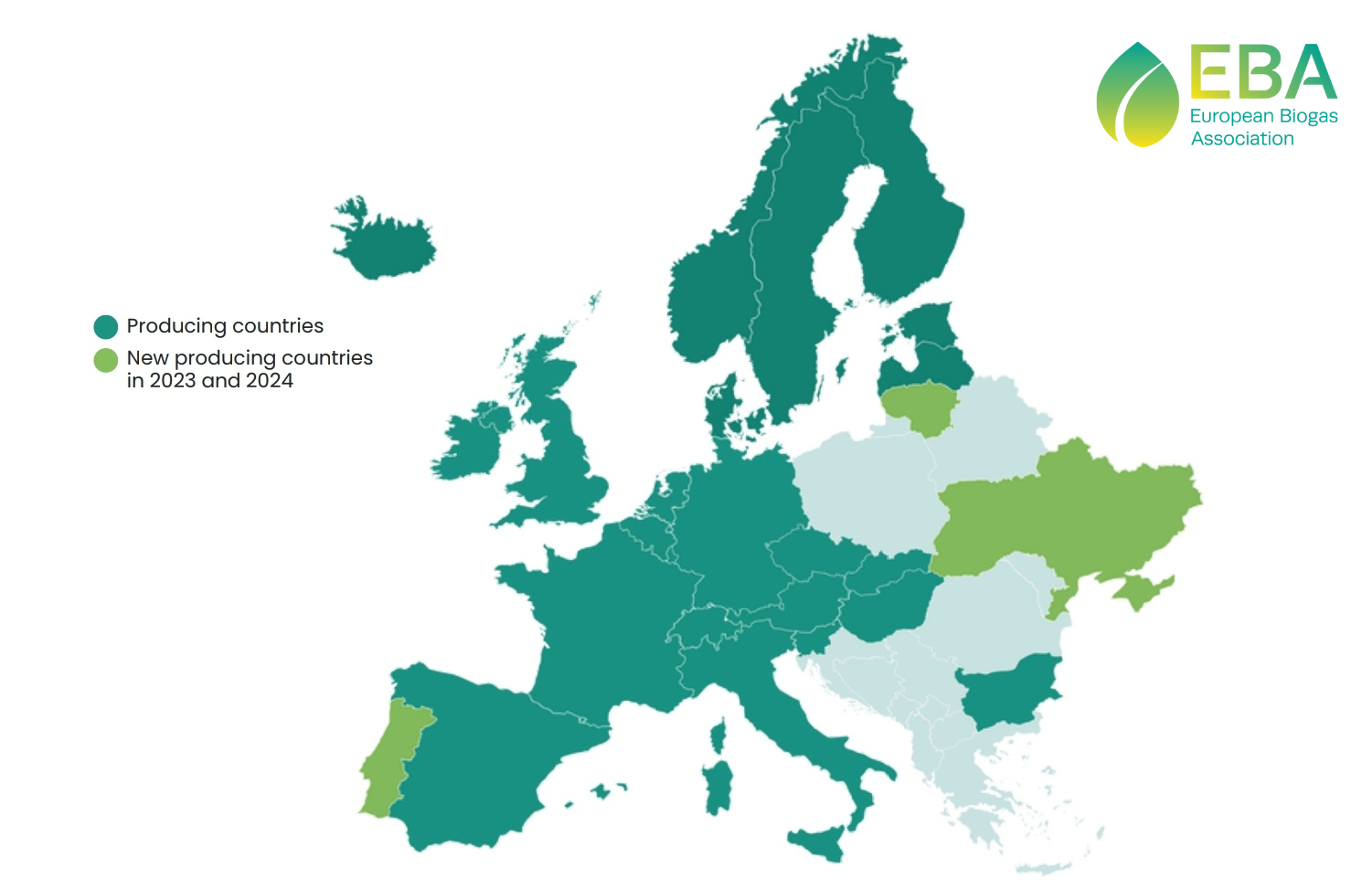
Source: EBA.
Sustainable feedstocks and a resilient energy transition
Since 2020, no new plants were established to run on energy crops as main feedstock.
New plants are being built to run on:
- agricultural residues;
- organic municipal solid waste;
- sewage sludge;
- industrial waste.
Biogases could significantly replace the future needs of gas, breaking the EU’s dependency from natural gas imports. Biomethane production potential by 2030 is higher than the 35 bcm proposed in the REPowerEU but needs to be unlocked. Target Plan estimates that combined consumption of natural gas, biomethane and biogas in 2040 will be of around 105 and 155 Mtoe (circa 125-184 bcm).
By 2040, biomethane production could supply 85% of a reduced gaseous fuels demand. EU countries with the highest potential: Germany, France, Spain, Italy, and Poland.
Reducing greenhouse gas emissions
Biogases play a crucial role in complementing and enabling the growth of other renewables. They provide clean, dispatchable power generation capacity, which is essential for bridging periods of prolonged low solar and wind output.
This requires stronger connections between the electricity and gas systems to compensate for drops in dispatchable power, mitigate grid congestion, and ensure grid stability.
As biomethane is chemically identical to natural gas, it can swiftly decarbonise the EU gas grid by being directly injected into the existing gas infrastructure. Reusing this pre-existing asset in the energy transition avoids the significant costs and time associated with producing new vehicles, heating appliances, energy storage, or networks.
Sustainable biomethane enables faster decarbonisation of energy system, providing heat and electricity for households and industries, as well as sustainable transport fuels.
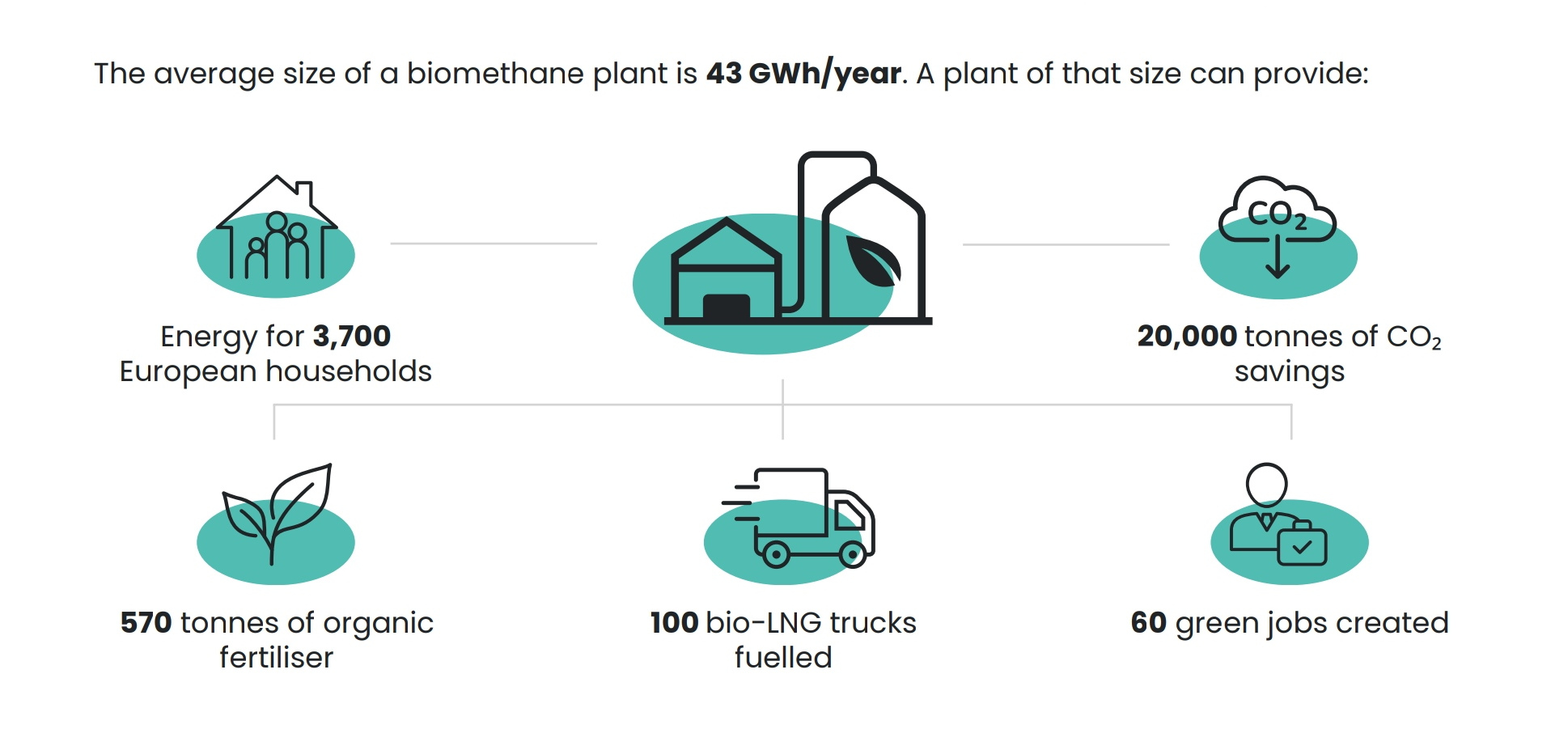
Source: EBA.
Digestate and bio-CO2
Digestate is a co-product of biogas production that can be used as an organic fertiliser. By doing so, it can replace different types of synthetic fertilisers, where Europe is heavily dependent from third countries.
This substitution can lead to a reduction in natural gas consumption, as the production of synthetic fertilisers is highly energy-intensive. Additionally, applying digestate to agricultural soils is recognised as a sustainable soil management practice
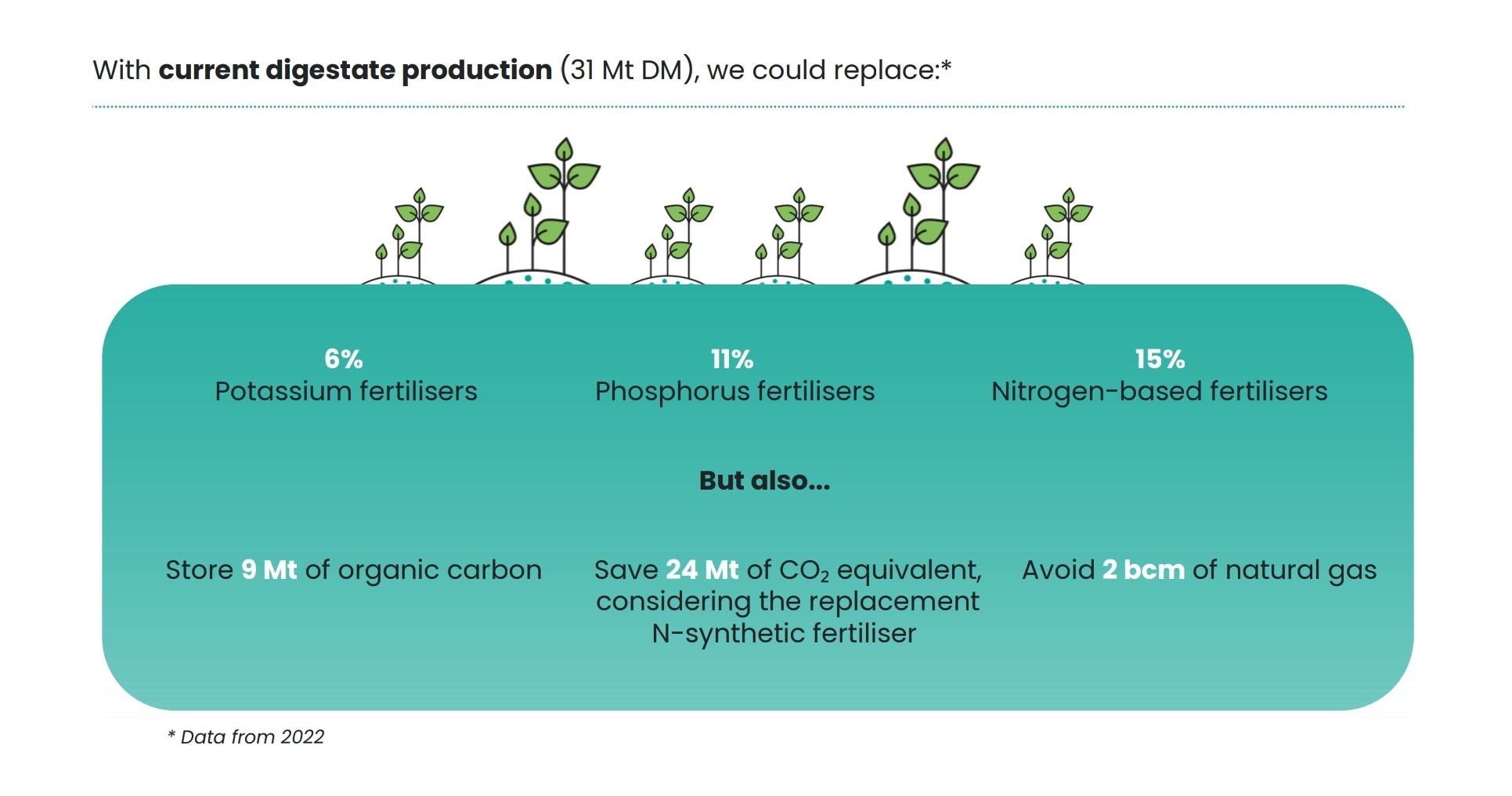
Source: EBA.
The stable organic fraction of digestate sustainably enriches the humus content of the soil. Soil regulates nutrient, carbon and water cycles, provides a habitat for biodiversity, and plays an essential role in the circular economy and climate change adaptation.
Today, CO₂ as feedstock is mainly from fossil origin. CO₂ is a needed input to produce chemicals, fuels, food and beverage products or construction materials, among others. Replacing fossil CO₂ by a sustainable and circular alternative such as bio-CO₂ leads to a negative emissions footprint which is not possible in the production of CO₂ from fossil origin.
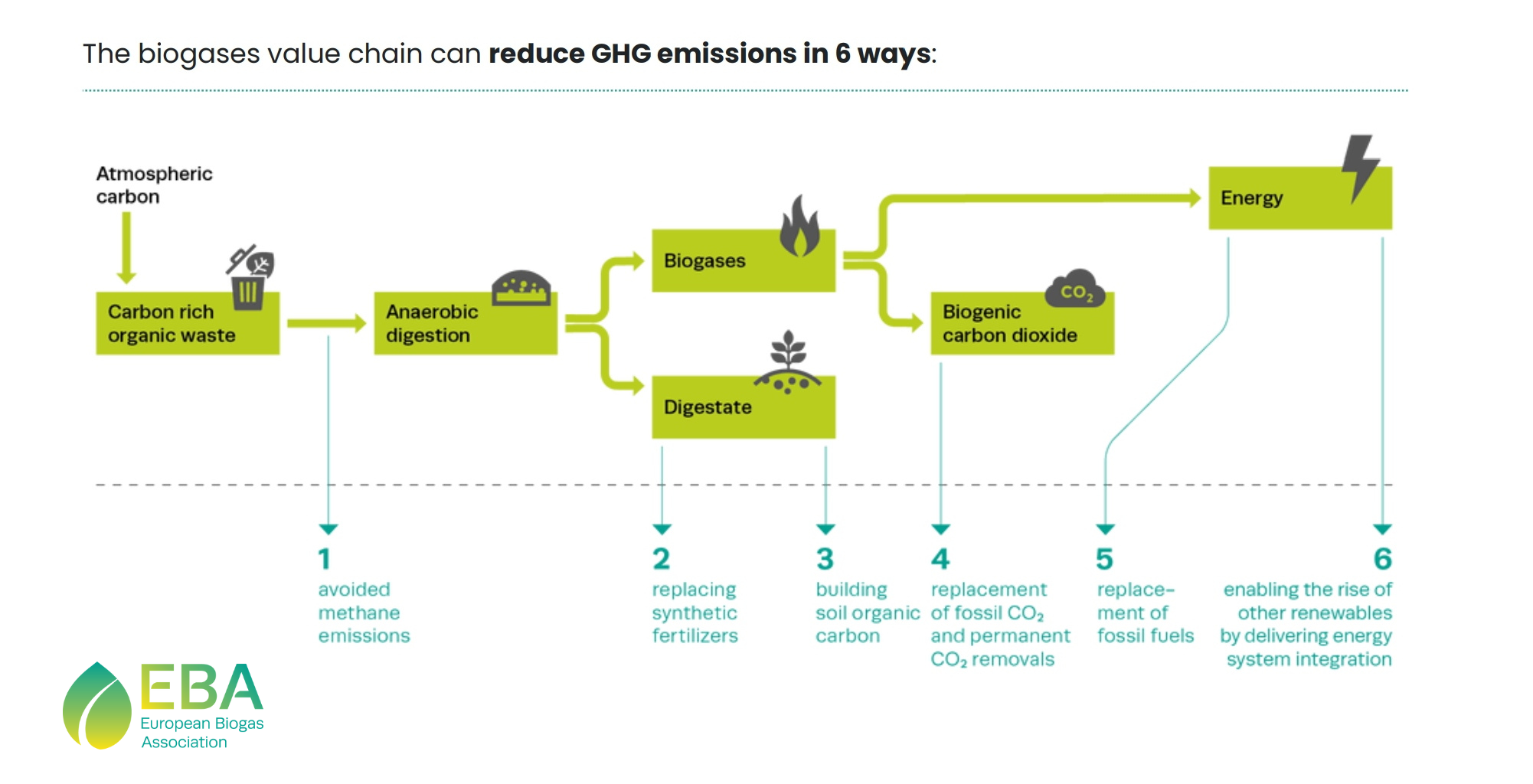
Source: EBA.
Socio-economic impact
In 2023, the biogas sector created 250 thousand jobs:
- 70 thousand direct;
- 170 thousand indirect jobs.
In 2030, this number could double to 500 thousand jobs. In addition, by 2050, we can already record 1.8 million jobs.
Every euro invested in biogases will remain in the European economy. At least €25 billion will be invested in Europe’s biomethane by 2030. This generates an additional benefit of €12 billion yearly to the European economy.
Download the EBA brochure
Founded in February 2009, the European Biogas Association is committed to the deployment of sustainable biogas and biomethane production and use throughout the continent. EBA counts today on a wellestablished network of nearly 300 national associations and other organisations covering the whole biogas and biomethane value chain across Europe and beyond. The Bioenergy Association of Ukraine is a full and active member of the organization.